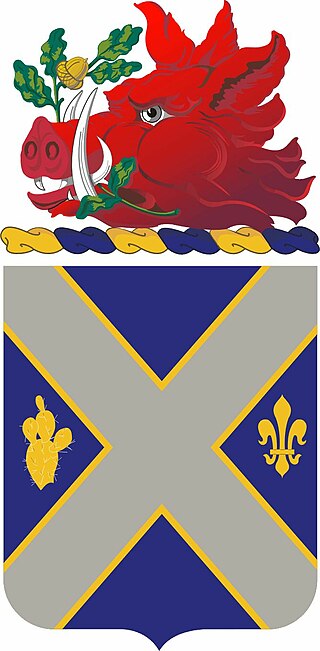Related Research Articles
The 134th Regiment of Foot was an infantry regiment of the British Army, created in 1794 and disbanded in 1796. The regiment was formed in Ireland by redesignating the newly raised 2nd Battalion of the 83rd Regiment of Foot, and did not leave Ireland before being disbanded in 1796.
The 129th Regiment of Foot was an infantry regiment of the British Army. It was created in 1794 and disbanded in 1796. The regiment was raised at Coventry, and was originally titled the Gentlemen of Coventry's Regiment of Foot, being retitled the 129th a few days later.
The 123rd Regiment of Foot (Loyal Lincolnshire) was an infantry regiment of the British Army, formed in 1794 and disbanded in 1796; it took its title from the 100th Foot, disbanded in 1785.
The 122nd Regiment of Foot was an infantry regiment of the British Army, formed in 1794 and disbanded in 1796.
The 121st Regiment of Foot was an infantry regiment of the British Army, formed in 1794 and disbanded in 1796.
The 119th Regiment of Foot was an infantry regiment of the British Army, formed in 1794 and disbanded in 1796.

The 119th Regiment of Foot was an infantry regiment of the British Army, formed in 1761 by the regimentation of independent companies and disbanded in 1763.
The 48th (Northamptonshire) Regiment of Foot was a regiment of the British Army, raised in 1741. Under the Childers Reforms it amalgamated with the 58th (Rutlandshire) Regiment of Foot to form the Northamptonshire Regiment in 1881.
The 115th Regiment of Foot (Prince William's) was an infantry regiment of the British Army from 1794 to 1795. It was raised in May 1794, named for its colonel Prince William Frederick, Duke of Gloucester and Edinburgh, but was disbanded the following year.
The 115th Regiment of Foot (Royal Scotch Lowlanders) was an infantry regiment of the British Army from 1761 to 1763.
The 114th Regiment of Foot was an infantry regiment of the British Army from 1794 to 1795. It was raised in April 1794 and was disbanded the following year.
The 114th Regiment of Foot (Royal Highlander Volunteers) was an infantry regiment of the British Army from 1761 to 1763.It was raised in October 1761, by Sir Allan MacLean of Torloisk. He was commissioned lieutenant in the 60th Foot Royal Americans at the beginning of the Seven Years' War and was severely wounded at Ticonderoga in 1758. He was then given one of the four NY Independent Companies until he returned to Scotland where he raised the 114th Maclean's Highlanders, or the Royal Highland Volunteers, as their Major Commandant. The regiment was disbanded in 1763.
The 109th Regiment of Foot (Bombay Infantry) was an infantry regiment of the British Army from 1862 to 1881, when it was amalgamated into The Prince of Wales's Leinster Regiment (Royal Canadians).

The 121st Infantry Division was a German Wehrmacht division in World War II. It was a part of the German XXVIII Army Corps. In September 1941 the formation, on arriving in Pavlovsk, Saint Petersburg; engaged in the siege of Leningrad. By October 1941 it was down to 40% of its authorized strength and 3 infantry battalions had to be disbanded due to high casualties. In 1944 it was involved in the retreat from Leningrad through the Baltic states wherein it fought in the Battle of Pskov. It remained in the Courland pocket until the end of the war.
The 110th Regiment of Foot (Queen's Royal Musqueteers) was an infantry regiment of the British Army from 1761 to 1763.
The 108th Regiment of Foot was an infantry regiment of the British Army from 1761 to 1763. It was raised in October 1761 from a cadre of the 31st Regiment of Foot, and was disbanded in 1763.

The 48th Infantry Brigade Combat Team is a modular infantry brigade of the Georgia Army National Guard. One of the oldest units in U.S. Army history, the lineage of the 48th Infantry Brigade can be traced back to 1825. It is one of few units in the US military that also saw service as a unit of the Confederate States of America during the American Civil War. Today, the 48th IBCT is part of the U.S. Army's "Associated Units" program where it is aligned under the 3rd Infantry Division, a combined arms combat maneuver unit of the Regular Army.

The 121st Infantry Regiment is an infantry regiment of the Georgia National Guard that saw combat service in the First and Second World Wars. As a result of army-wide reorganization in the 1950s, the 121st Infantry ceased to exist as a single unit; today, various units of the Georgia National Guard trace their lineage to the 121st Infantry.

The 1st Battalion, 121st Field Artillery is currently part of the 157th Maneuver Enhancement Brigade that is based out of Milwaukee, Wisconsin. Attached to the 1-121st is Battery A located in Hartford, Wisconsin; Battery B located in Plymouth, Wisconsin; 108th Forward Support Company located in Sussex, Wisconsin.
References
- ↑ "121st Regiment of Foot". regiments.org. Archived from the original on 14 October 2007.